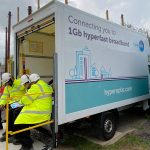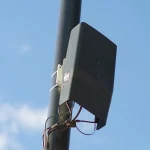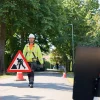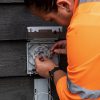Openreach Shallow Build Trial May Expand UK FTTP Coverage

Openreach recently began a new Shallow Build Trial in Great Britain (excluding N.Ireland) for their Fibre-to-the-Premises (FTTP) broadband ISP network, which we think could make it possible for the operator to expand their network into areas that might normally be too challenging due to high deployment costs and risk.
The trial was actually first announced late last year (here), although we opted not to cover it until more information came our way. But firstly, it’s important to understand that the term “shallow build” in Openreach lingo has nothing to do with the depth of buried ducting and everything to do with the distance between their fibre and end-customers.
Put simply, a shallow build takes fibre to the edge of a neighbourhood or business park, while a deep build takes that fibre all the way to the customer’s premises. Most of Openreach’s deployments with Fibre-to-the-Premises (FTTP) broadband technology are deep builds.
Advertisement
The Shallow Build Trial is initially only focused upon serving business parks, and it will do this by building fibre to the splitter node. However, rather than then extending this to run the fibre past every individual business, the operator will instead only action that expansion upon receiving an order for the service.
In theory, doing this could enable them to reach areas that might ordinarily be too expensive, while at the same time reducing their risk if take-up is low or none-existent. But Openreach clarifies that this is more about testing their ability to provision to more premises from the network in place today – not about changing the way they build such that they stop at the shallower point from customers (positive efficiency).
A Spokesperson for Openreach told ISPreview.co.uk:
“We are trialling a new provision method in Great Britain (not NI) where we provide FTTP service starting from the splitter node. The Trial will mainly focus on business parks and industrial estates. During the Trial we intend to evaluate the lead times and efficiency of this provision route. The current Trial is about testing Openreach’s ability to provision to more premises from the network in place today.
The trial started in December 2022 and is expected to last at least six months. The initial small scale Trial footprint is c.5k premises across 88 Exchanges. During the Trial we aim to expand the number of Shallow Build locations and increase the extent of coverage.
The Trial is open to all Communication Providers, who can join-in at any time. Prevailing prices for connection and rental apply, with Equinox discounts applicable as appropriate.”
The question of lead-times (i.e. how long it takes to go from placing an order to an installation) is important because, once an order has been placed by a customer, this approach would leave more work left to be done than might ordinarily be the case (i.e. risk of longer lead times).
Likewise, it’s usually more cost-effective to complete a deployment when you have all of your engineers ready nearby, rather than on a less predictable timescale. But the trial is clearly keeping this in mind and will no doubt examine how much such issues can be mitigated. The fact that they aren’t currently expecting to apply higher connection charges to related installations is also positive.
Advertisement
Finally, we’re unsure how Openreach would record ‘premises passed‘ in such locations. The operator informed us that they will be transparent with ISPs and Ofcom about what they’re saying is “available to order” at any point in time and post-trials would look to clarify expected lead times, processes, etc.
Overall, this sounds like a positive way of helping to bring FTTP closer to premises that might have otherwise been overlooked, albeit currently only applicable at certain business parks.
Mark is a professional technology writer, IT consultant and computer engineer from Dorset (England), he also founded ISPreview in 1999 and enjoys analysing the latest telecoms and broadband developments. Find me on X (Twitter), Mastodon, Facebook, BlueSky, Threads.net and Linkedin.
« Mobile Operator Three UK Launch New Three Your Way 5G Plans
ISP Lit Fibre Extend FTTP Broadband to Watford and Basildon »






















































Why does OR say “Shallow Build” when it actually means “Incomplete Build”?
The art of changing and redefining language in order to mislead has now moved away from leftist politics. I’m sure the shallow build will want to identify itself as complete and you’ll be a bigot for complaining it is not complete
another way to sting you when requesting connection then. Varying charges between customers because no transparency over this new type of installation.
There’s no mention at all of any charging differences. From experience I can say that having managed a couple of installs described as shallow build the standard installation charges applied.
Standard connection fees apply to shallow builds.
ECC’s (excess construction charges) will be calculated from the (yet to be built) CBT as is done on any normal FTTP order.
Only the lead times differ.
John, I think the art of changing the meaning of language and basically lying to the general public is more prevalent in right wing politics more than it ever was in left wing politics.
Changing the meaning of language and basically lying to the general public is a function of all sides of the political spectrum.
We tend to notice it when the other side does it and gloss over it when “our” side does the same.
You mean like Scottish leftist leader misappropriating the basic word woman on ITV just 3 days ago for political gain?
I read this and thought that is a really clever idea. Until I seen this was nothing like I was thing. So here is question. Why can they not do what most people were thinking and have the cable run ontop of the ground and only cut out an inch off the top and use strong ducting for hard to reach rural areas?
Because the Lightning Teams strike enough cables at the approved depth as it is, imagine the number of strikes if it was an inch in the ground…
Will fibre be run to each premise via manifolds? If so the first premise installation will take time as the manifold has to be installed with fibre run from the splitter node, but subsequent fibre from a manifold to a premise should take less time.
Manifolds are long gone. The build uses a CBT connectorised block terminal at the serving pole or box and the installer just plugs in their connection to the customer.
Whether Openreach uses CBTs or manifolds is not the issue: fibre is run to the premise via a fibre connection point, so digging has to be done to install the CBT chamber (no poles in my area) and to get fibre to that chamber before the first customer can be connected.
You can’t assume they’ll dig just because there are no poles, you’re either fed by ducts or buried cables, in that case they’ll most likely install poles anyway.
This makes sense. A lot of business parks have MOU’s/MDU’s, etc which would normally be fed by basement boxes so this allows Openreach to build to site and claim the premises passed meaning they will actually cost in to the build